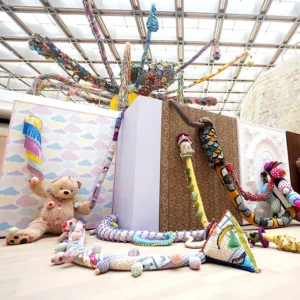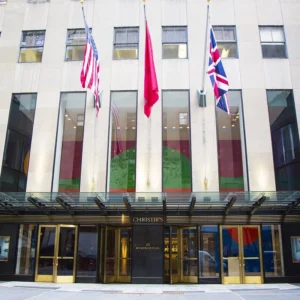The sixth edition of the Felix Art Fair at the Hollywood Roosevelt Hotel in LA maintains its lively and playful atmosphere. It features 66 exhibitors, including nonprofits and artist-run spaces, across poolside cabanas and hotel floors.
Created by Los Angeles collector Dean Valentine and gallerists Al and Mills Morán, the fair embraces a non-market-driven approach, focusing on enjoyment rather than sales. Despite challenges in the art market, Felix continued to attract a diverse crowd of collectors, maintaining its reputation as a fun and accessible art fair.
Notable changes included reduced queues, a collaboration with Dover Street Market at the entrance, and a VIP Lounge by Mercedes-AMG Race Service. The fair showcased diverse and experimental exhibitions, utilizing every inch of space, including unconventional areas like bathrooms transformed into mini-project spaces.

The overall aesthetic trend at the fair leans toward lowbrow, with figurative, energetic, and folk-adjacent paintings dominating. An overview of notable artworks includes Sahana Ramakrishnan’s large paintings drawing on Indian mythology, Talia Levitt’s textured paintings at Rachel Uffner Gallery, Kathryn Goshorn’s egg tempera paintings at Storage, and works by Cheryl Pope and Jake Troyli at Monique Meloche Gallery.
Other standout pieces include vibrant canvases by Angeline Rivas at Chris Sharp Gallery and Isabelle Albuquerque’s phallic bronze and silver sculpture, “Shadow Cruiser,” at Nicodim, demonstrating the fair’s diverse and compelling artistic offerings.

The Creative Growth Art Center, exclusively featuring artwork by adults with developmental disabilities, makes a radical statement by presenting its artists alongside others rather than in a specialized diversity showcase.
A special poster exhibition titled Women in Print: Expanding the LA Canon curated by the Judith Center in collaboration with the Center for Political Graphics is featured in the Cabana hallways. This exhibition highlights women’s impact on images in activism and commerce, with influences from Sister Corita Kent’s colorful screenprints visible in some Felix booths, such as Elizabeth Atterbury’s works represented by DOCUMENT.
Although the market retraction was evident, with galleries aiming to break even, several galleries reported successful sales, with highlights including Nina Johnson selling all but one work by Dee Clement within hours, and Charles Moffett featuring artists like Bari Ziperstein and Julia Jo, whose works sold for significant prices.





